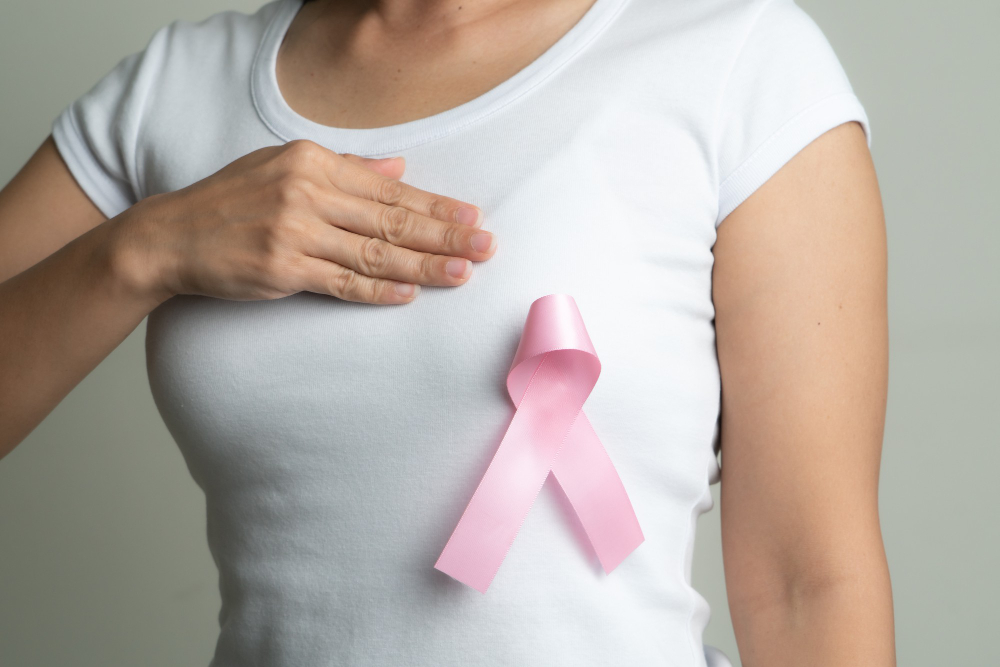Breast Cancer

Breast cancer is a type of cancer that develops in the cells of the breast tissue. It is the most common cancer among women worldwide, but it can also occur in men. Understanding risk factors, symptoms, and available treatments is crucial for early detection and effective management of breast cancer.
Risk Factors
Several factors may increase the risk of developing breast cancer, including:
Age: The risk of breast cancer increases with age, with the majority of cases diagnosed in women over 50.
Genetic Factors: Inherited mutations in genes such as BRCA1 and BRCA2 increase the risk of breast cancer.
Family History: A family history of breast cancer, especially in first-degree relatives (parents, siblings, children), may increase an individual’s risk.
- Personal History: Women who have had breast cancer in one breast have an increased risk of developing cancer in the other breast or a recurrence.
- Hormonal Factors: Factors such as early menstruation, late menopause, hormone replacement therapy, and never having children or having them later in life may influence breast cancer risk.
Symptoms
Early-stage breast cancer may not cause noticeable symptoms, but as the cancer progresses, symptoms may include:
- A lump or thickening in the breast or underarm area.
- Changes in breast size, shape, or appearance.
- Nipple changes, such as inversion, discharge, or scaling of the skin.
- Breast pain or tenderness.
Prevention and Screening
Prevention and early detection are crucial for reducing the burden of breast cancer. Effective strategies include:
- Breast Self-Examination: Regular breast self-exams can help individuals become familiar with the normal look and feel of their breasts, making it easier to detect any changes.
- Clinical Breast Exams: Healthcare providers may perform clinical breast exams as part of routine check-ups to detect any abnormalities.
- Mammography: Mammograms are X-ray exams of the breast tissue and are the most effective screening tool for detecting breast cancer early, particularly in women over 40.
Treatment
Treatment options for breast cancer depend on various factors, including the stage of the cancer, its characteristics, and the individual’s overall health. Treatment may include:
- Surgery: Surgical procedures such as lumpectomy (removal of the tumor and surrounding tissue) or mastectomy (removal of the entire breast) may be performed to remove cancerous tissue.
- Radiation Therapy: Radiation therapy uses high-energy beams to target and destroy cancer cells, either after surgery to eliminate any remaining cancer cells or as the primary treatment for certain types of breast cancer.
- Chemotherapy: Chemotherapy involves the use of drugs to kill cancer cells or inhibit their growth and may be used before surgery (neoadjuvant chemotherapy), after surgery (adjuvant chemotherapy), or as the primary treatment for advanced or metastatic breast cancer.
- Hormonal Therapy: Hormonal therapy, also known as endocrine therapy, may be recommended for hormone receptor-positive breast cancers. This treatment aims to block the effects of hormones such as estrogen or progesterone, which can fuel the growth of cancer cells.
- Targeted Therapy: Targeted therapy drugs specifically target cancer cells by interfering with specific molecules involved in cancer growth and progression. These treatments are often used in combination with other therapies for certain types of breast cancer.
